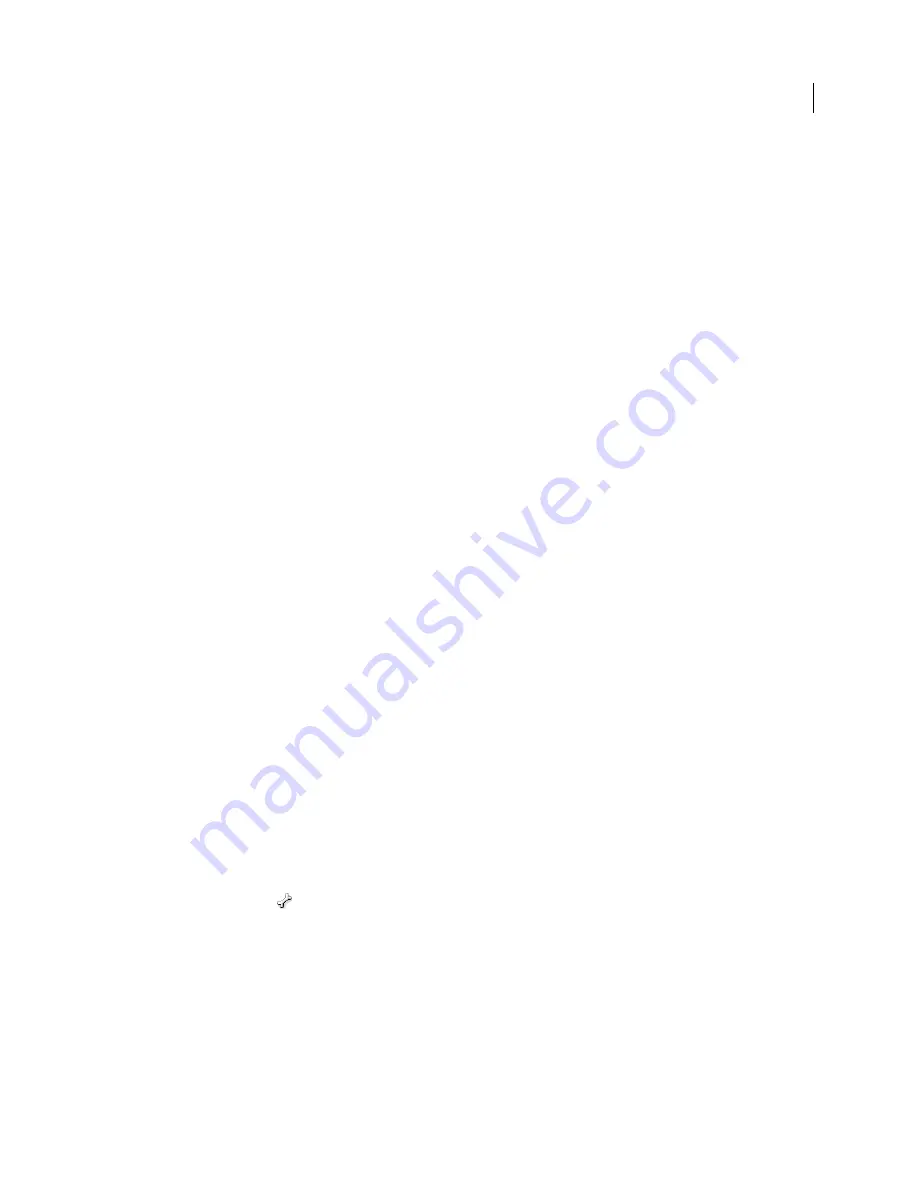
225
USING FLASH CS4 PROFESSIONAL
Timelines and Animation
The second way to use IK is to add an armature to the interior of a shape object. The shape can be created in merge
drawing mode or object drawing mode. The bones allow you to move and animate parts of the shape without the need
to draw different versions of the shape or create a shape tween. For example, you could add bones to a simple drawing
of a snake to enable the snake to move and curve realistically.
When you add bones to symbol instances or shapes, Flash moves the instance or shape and the associated armature to
a new layer in the Timeline. This new layer is called a
pose layer
. Each pose layer can contain only one armature and
its associated instances or shape.
Flash includes two tools for working with IK. You add bones to symbol instances and shapes with the Bone tool. You
use the Bind tool to adjust the relationships between individual bones and control points of shape objects.
You can animate armatures and their associated symbols or shapes either in the Timeline or with ActionScript 3.0. You
animate in the Timeline by defining different poses for the armature in different frames. Flash interpolates the
positions of the armature in the frames in between. For information about animating armatures with ActionScript, see
the
fl.ik
classes in the
ActionScript 3.0 Language and Components Reference
.
Note:
To use inverse kinematics, your FLA file must specify ActionScript 3.0 as the Script setting in the Flash tab of the
Publish Settings dialog box.
For a video tutorial about inverse kinematics, see Using Inverse Kinematics at
www.adobe.com/go/lrvid4058_fl
.
See also
“
Drawing modes and graphic objects
” on page 94
Add bones to symbols
You can add IK bones to movie clip, graphic, and button instances. To use text, convert it to a symbol first.
Note:
You can also break text apart (Modify > Break Apart) into separate shapes and use bones with the individual
shapes.
When you add bones to symbol instances, you create a chain of linked instances. This is different from using bones
with shapes, where the shape becomes a container for the bones. The linked chain of symbol instances can be a simple
linear chain or a branched structure, depending on your needs. A character of a snake would need only a linear chain,
while a human figure would need a structure with branches for each limb.
Arrange the symbol instances on the Stage in approximately the configuration that you want them in before adding
bones to them. You can edit their relative positions after adding bones, but this step can save time later. The symbol
instances can be on different layers before adding bones. Flash moves them to a new layer when bones are added.
1
Create symbol instances on the Stage.
Arrange the instances in the approximate spatial configuration you want them in before adding bones.
2
Select the Bone tool
from the Tools panel.
You can also press the X key to select the Bone tool.
3
With the Bone tool, click the symbol instance that is to be the root or head of the armature. Then drag to a separate
symbol instance to link it to the root instance.
While dragging, a bone appears. When you release the mouse, a solid bone is displayed between the two symbol
instances. Each bone has a head, the round end, and a tail, the pointed end.
Updated 5 March 2009






























